The right hospital lighting design plays a crucial role in providing visibility, enhancing color rendering, minimizing glare, promoting patient well-being, and improving staff efficiency.
So, what kind of lights can meet the lighting needs of modern hospitals? In this article, we will delve into the key requirements of hospital lighting design, and the respective characteristics of traditional lighting and LED panel lights. Understanding this knowledge can be a comprehensive reference before purchasing hospital lighting fixtures.
Hospital lighting environments need to meet stringent requirements to ensure optimal patient care and staff efficiency. The specific requirements for hospital lighting design are:
| Recommended Values for General Lighting in Hospitals | ||||
|---|---|---|---|---|
| Room or Place | Reference Plane | Illumination(Lux) | UGR | Ra |
| Operating Room | 0.75 m Height | 750 | 19 | 80 |
| Laboratory, Pharmacy | 0.75 m Height | 500 | 19 | 80 |
| Treatment Room, Examination Room | 0.75 m Height | 300 | 19 | 80 |
| Nurse's Station, Monitoring Room | 0.75 m Height | 300 | 19 | 80 |
| Waiting Rooms, Registration Halls | 0.75 m Height | 200 | 22 | 80 |
| Wards, Walkways | Ground Level | 100 | 19 | 80 |
The above illuminance requirements are based on the entire room and do not specify localized illuminance requirements. However, in actual cases, we have found that a stepped, scenario-based illuminance distribution is more in line with the needs of a hospital lighting system. In reference to the Lighting Association of North America (IESNA) published “IES HANDBOOK” listed in the recommended illuminance values, we categorize the gradient and scene of the illuminance distribution of two cases:
For example, in the hospital’s common entrance hall, registration hall, consulting desk and other areas of the work desk surface illumination can be increased to 300 lux ~ 750 lux, and the general area of the ground during the day can be up to 200 lux, the family rest area ground 100 lux.
The use of an illuminance ladder on the visitor’s vision to assist in the guidance, to serve the patient and family members of the medical requirements.
in the examination room, for example,there are two common scenarios of doctors talking to and examining patients. The illuminance value they need is 300~500 lux in the IES recommendation and 1000 lux on the working surface during local inspection.
Inside the ward, there are also doctors checking and night observation, of course, there are also patients reading, entertainment, and other life scenes. These corresponding to the work surface and illuminance level are not the same, lighting design needs to be considered differently.
Ward Check Status
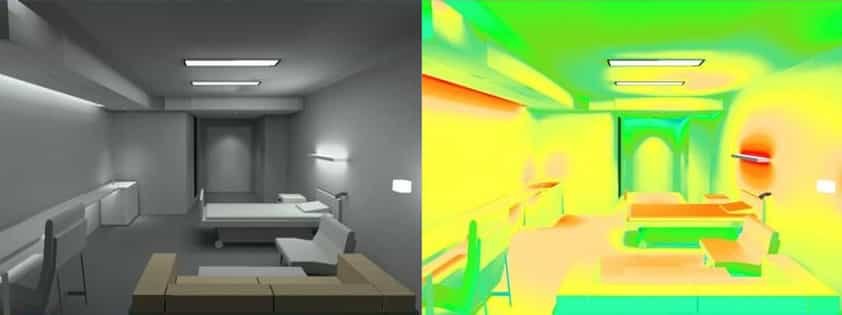
Ward Observation Status
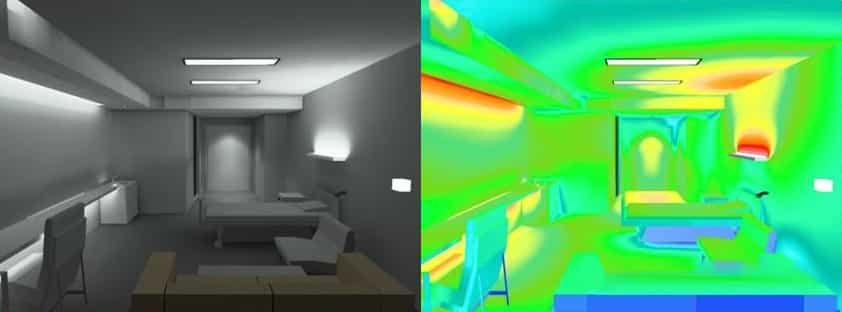
Especially in medical elevator halls, wards, walkways to operating rooms, examination rooms, and other areas involving patients in supine positions. These areas need to reduce or avoid installing luminaires that cause significant glare. Diffuse luminaires or indirect light-emitting luminaires such as LED panel lighting is recommended.
For example, in a multi-person room, the use of drapes ensures patient privacy but also increases the complexity of luminaire control. Luminaire control needs to satisfy both the overall medical lighting requirements and the patient’s need for light control of the personal space within the drape.
Lighting power expenditure has been the main part of hospital power consumption. From the current development of lamps, using high luminous efficiency lamps, reasonable light distribution design, and intelligent control is an effective program to reduce power expenditures. The following are recommended limits for hospital lighting power density:
| Recommended Limit Values for Hospital Lighting Power Density | ||
|---|---|---|
| Room or Place | Illumination Value (lux) | Lighting Power Density Limit (w/m²) |
| Laboratory, Pharmacy | 500 | ≤13.5 |
| Treatment Rooms, Nurses' Stations | 300 | ≤8 |
| Waiting Rooms, Registration Halls | 200 | ≤5.5 |
| Wards and Walkways | 100 | ≤4.5 |
Traditional hospital lighting has primarily used grid fluorescent lamps, and some older hospitals may still be using compact CFLs. These lights were configured 20 years ago and do not meet the current needs of patients and staff in these areas of comfort, visibility, and glare.
Whether it’s a grille lamp or a regular compact CFL, they have inherent limitations in lighting uniformity. If the lamps use cheap three-color phosphors, the color rendering index will also be lowered. Uneven illumination and low color rendering index can easily cause visual fatigue.
Traditional fluorescent lamps or CFLs have a luminous efficacy of less than 85 LM/W. As a result, certain localized lighting in hospitals often requires high-power lamps to achieve the required illumination levels.
Energy-intensive lighting is a major part of a hospital’s electricity consumption, which may have been the norm 20 years ago. The chart below shows the U.S. Department of Energy’s Energy Information Administration‘s (EIA) statistics for healthcare building electricity consumption at that time, with lighting accounting for 42%.

The theoretical lifespan of traditional CFLs is 5,000 to 8,000 hours. If non-tri-color powder lamps are used, the light decay will be faster, and therefore the lifetime will be shorter. Obviously, frequent replacement of bad lamps will increase the operating costs of the hospital.
Low illumination (118.5 lux) at 0.75 m height
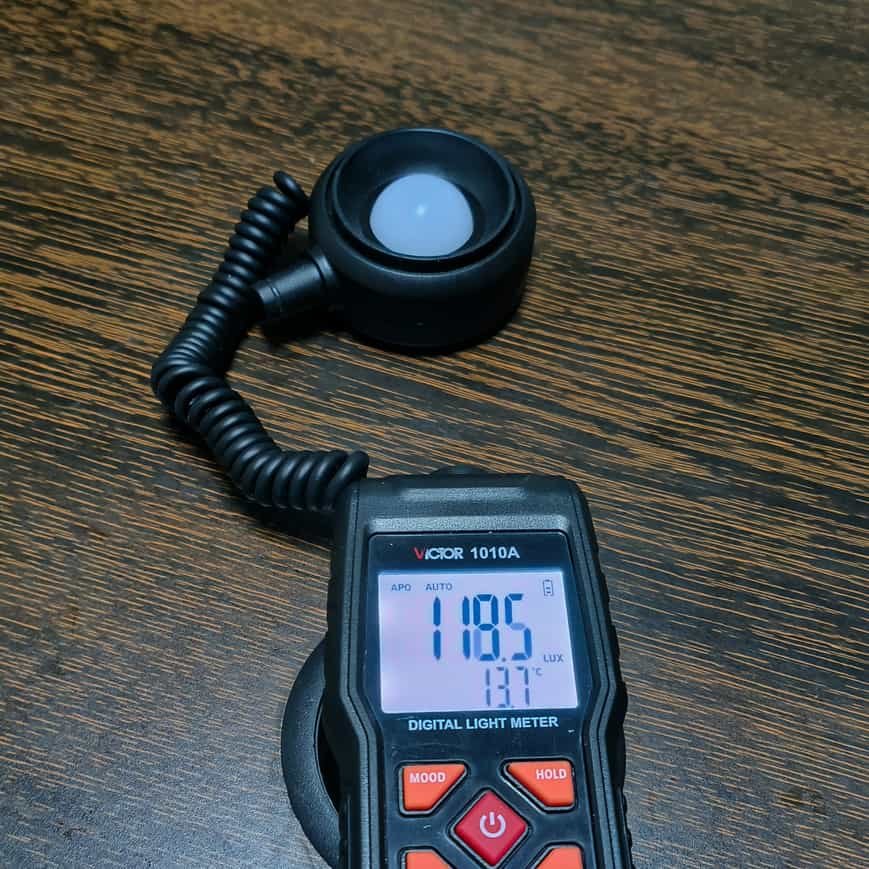
Traditional grille lamp at hospital lighting

The field of hospital lighting has undergone a groundbreaking transformation with the advent of LED ceiling panel light. These innovative lighting solutions offer countless benefits, ranging from creating a soothing environment for patients to improving illumination during medical procedures. Next, we’ll take an in-depth look at the benefits LED panel lights bring to hospitals.
Hospitalization can cause a variety of stresses such as pain and anxiety. An unsuitable light fixture such as a harsh chandelier can exacerbate these stresses. At this point, a calming atmosphere is needed to relieve this stress. Edge-lit LED panel light excel in this area, providing soft, diffused lighting that minimizes glare and shadows. The even distribution of light creates a soothing environment for the patient, promoting relaxation and aiding the healing process.
Additionally, the intelligent LED flat panel light also has built-in dimmable and color temperature adjustments to mimic natural daylight, further enhancing patient comfort.
Below is a specific main lighting scheme:
In the ward, 4 pcs 60 x 60 cm (2’ x 2′), 36-watt dimmable LED panel lights were installed in the ceiling to provide overall illumination. The lamps can be adjusted for the desired illuminance values, from 100 to 500 Lux.

The edge-lit ultra thin LED panel light provides excellent light quality and uniformity, ensuring consistent brightness throughout the room. This is due to its light guide and diffusion panel that evenly disperses and softly directs the LED light source. It is worth noting that direct-emitting panel lights may not meet this high requirement. This enhanced visibility allows healthcare professionals to perform procedures accurately, reducing the risk of error.
The photo below shows 16 pcs 30 x 120 cm, 18-watt edge-lit ultra-thin LED panel lights installed in the ceiling to provide overall illumination.

The color rendering index is an important parameter for accurate lighting. In the operating room or treatment room, accurate lighting is critical for medical procedures and examinations.
The color rendering index (Ra) refers specifically to the degree to which an object reproduces its true color when illuminated with a certain light source and when illuminated with a standard light source (usually sunlight). The higher the color rendering index, the higher the true color reproduction; the lower the color rendering index, the greater the color difference.
The color rendering index (CRI) of our panel light is above 80, and some customized models have a CRI above 95. A high CRI allows for accurate color perception, which is important for tasks such as vein detection and distinguishing tissue types.
Below is the parameter table of some of our regular panel lights:
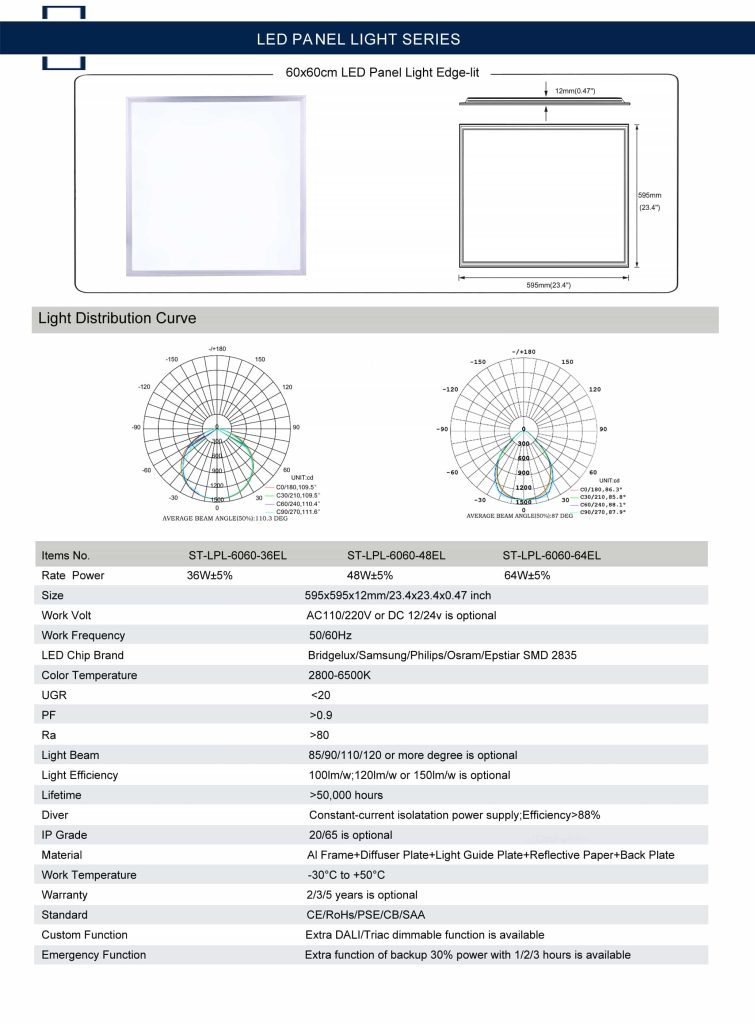
Hospitals are energy-intensive environments where energy efficiency is an important consideration. The benefit of high luminous efficacy is that the same illumination requirements can be achieved with lower wattage. Our regular LED panel light ceiling efficiency is above 110lm/w, and some customized models have been above 150lm/w. Compared with traditional lighting systems, their power consumption is greatly reduced.
Hospitals are places of uninterrupted operation, which places high demands on hospital lighting. Therefore efficient installation and maintenance processes are particularly important for healthcare.
Edge-lit LED panel lights are designed for easy installation, with options for recessed, surface-mounted, or suspended mounting. Their lightweight and slim profile simplifies the installation process, minimizing disruption to hospital activities. Additionally, these lights have a longer lifespan and require minimal maintenance compared to traditional lighting, reducing the need for frequent bulb replacements and minimizing downtime.
Below are the installation instructions:
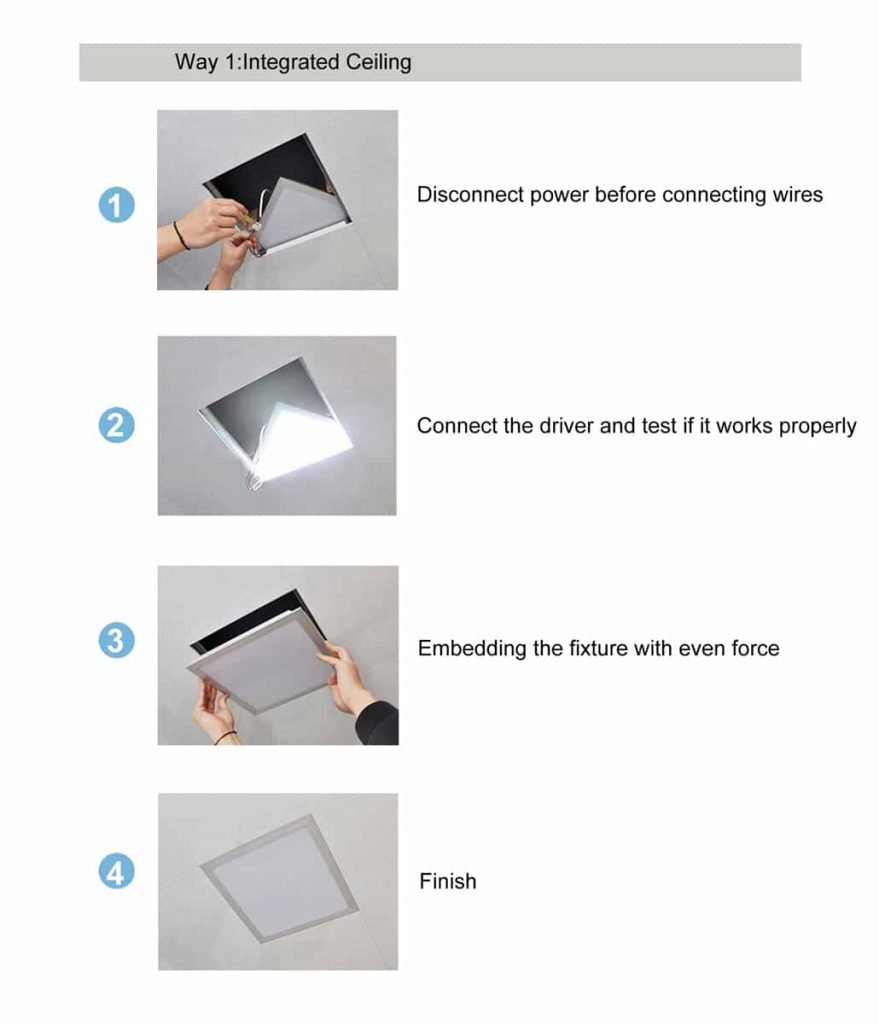

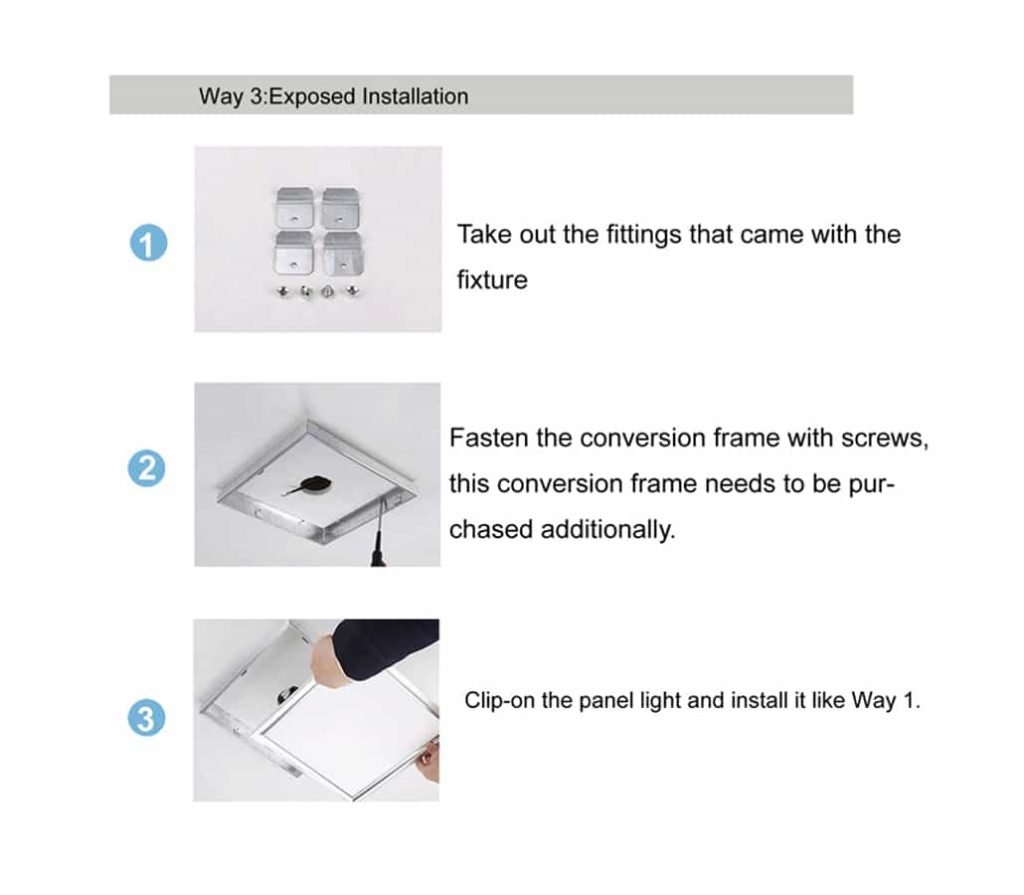

We have a full range of LED panel lights to meet the special requirements of hospital lighting. If you still need to customize the parameters of them please contact us, our sales engineers will give you cost-effective lighting solutions.
In conclusion, edge-lit LED panel lights are revolutionizing hospital lighting by offering numerous benefits. From creating a soothing and comfortable environment for patients to providing optimal illumination for medical procedures, these lights enhance the overall healthcare experience. With their energy efficiency, easy installation and maintenance, and smart lighting functions, edge-lit LED panel lights are the perfect lighting solutions for hospitals, promoting well-being, safety, and sustainability in healthcare facilities.
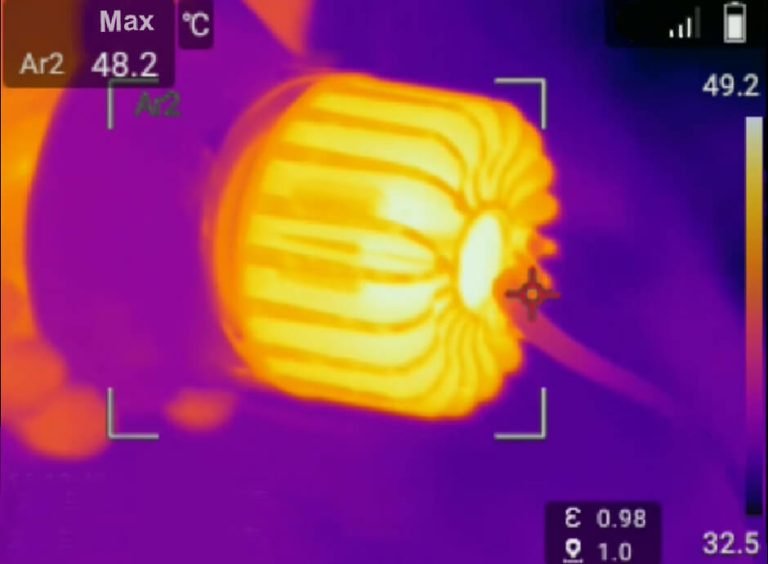
Some Essential Elements of Cost Effective Heat Sink ———– key points when purchasing audio or lighting products in bulk quantity When planning to purchase LED lamps or audio amplifiers, the…
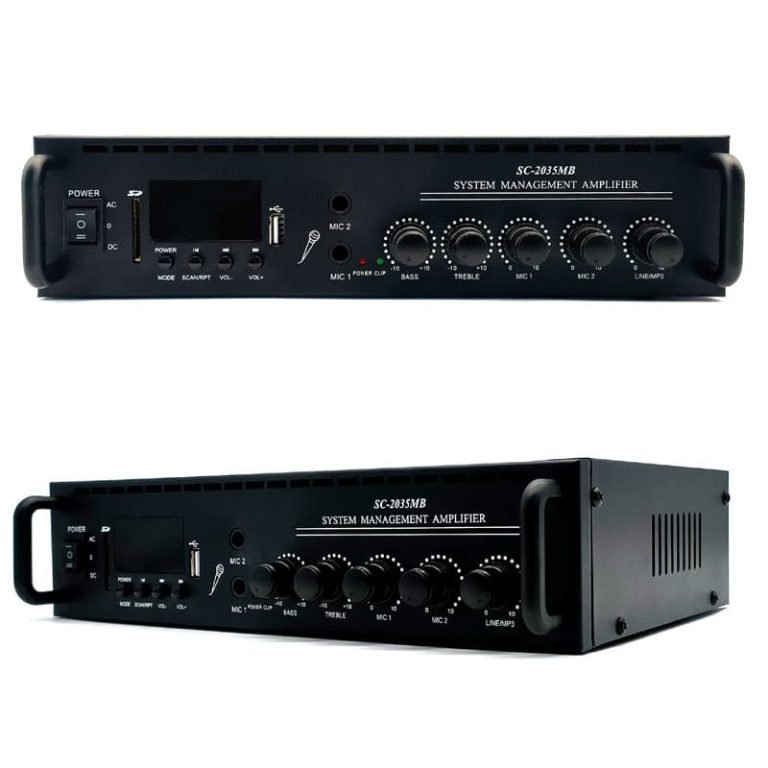
How to make audio amplifier using transistor? There are many ways to implement a power amplifier circuit, and the way using transistors to create the amplifier circuit is the most…
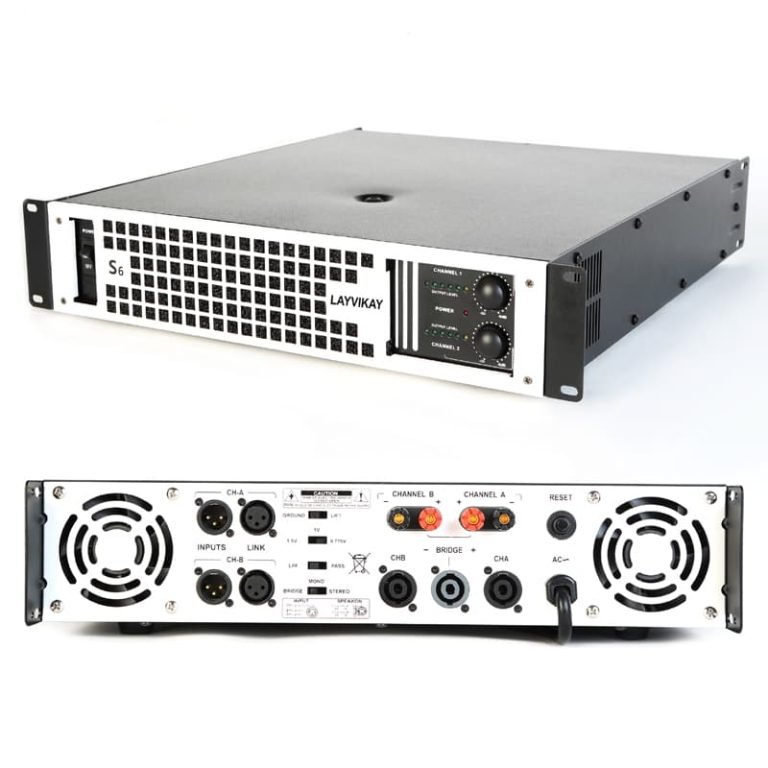
Professional Power Amplifier Purchasing Guide Whether for commercial or home use, professional power amplifier is a kind of audio equipment with high cost performance. LayviKay, as a reliable audio factory…

How to repair LED panel light driver LED panel lights have become popular for commercial lighting due to their energy efficiency and long service life. However, like any electronic device,…
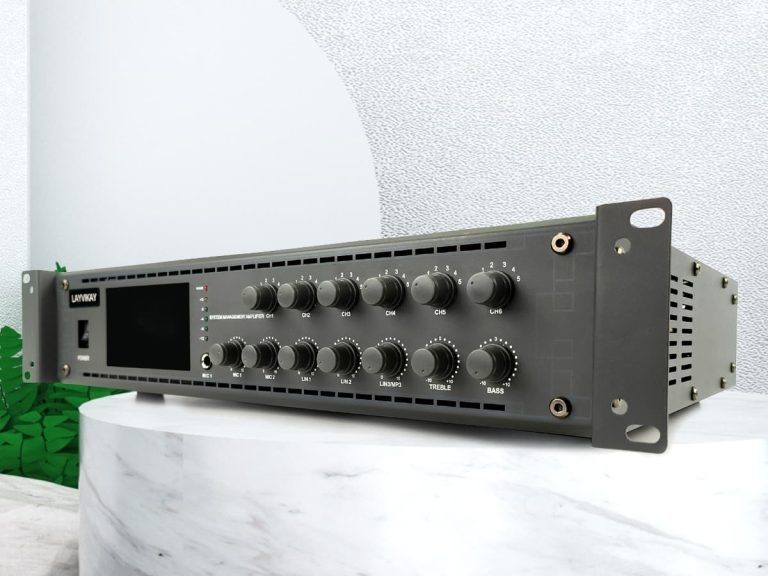
Network Audio Amplifier Guide Tips What is Network Amp? A Network Amp, aka IP-based audio amp or network audio amp, is an audio device that merges the functions of an…
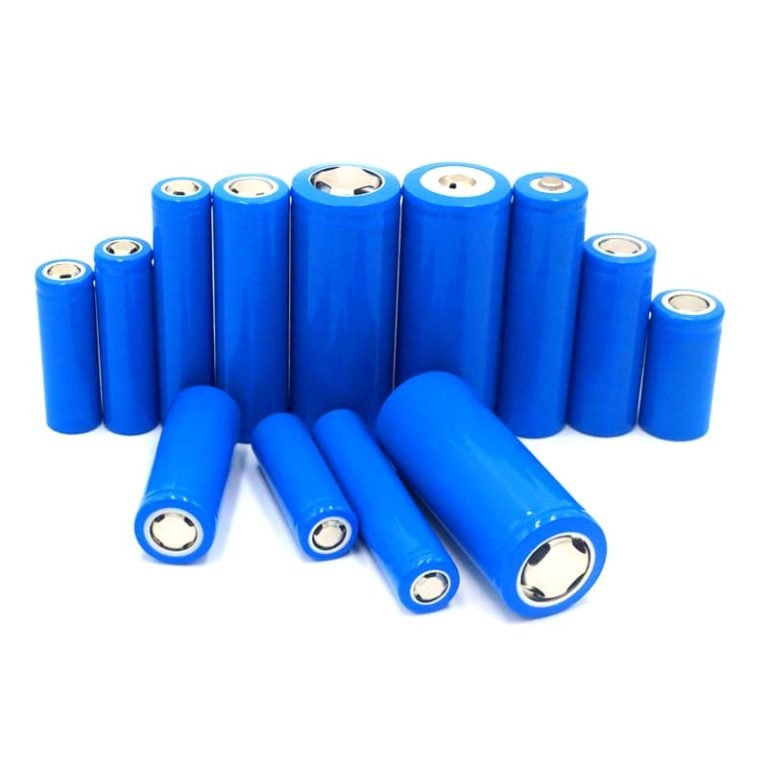
Some Basic Elements of 18650 Battery for Solar Lights The 18650 rechargeable battery is a crucial component of many solar LED lights. Selecting an appropriate 18650 battery is especially important…